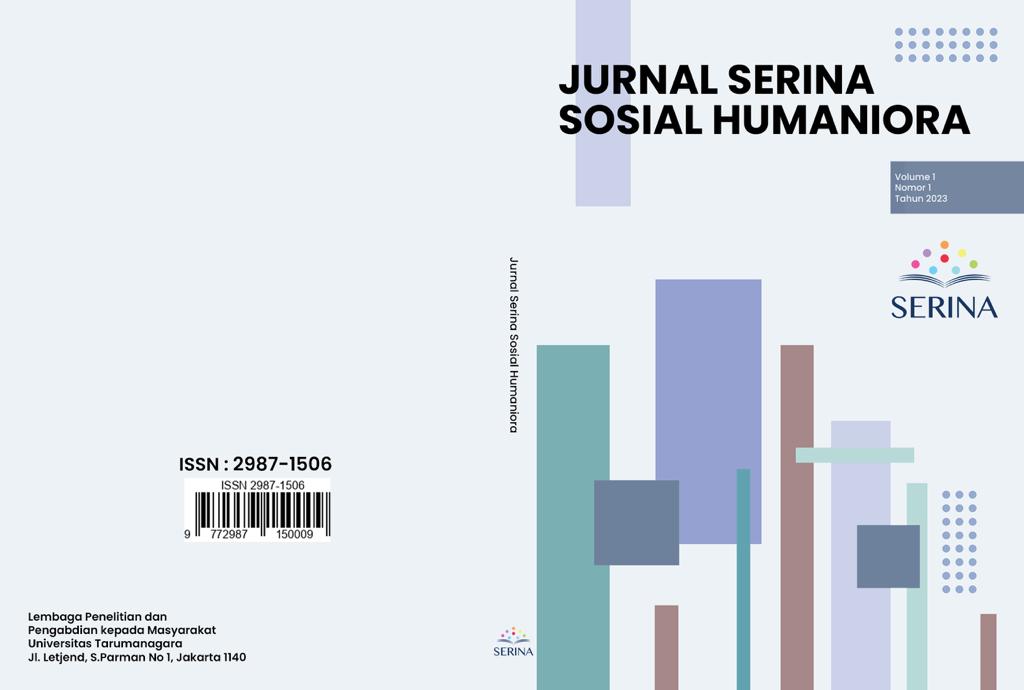SENANGKAH SISWA BERSEKOLAH? STUDI MENGENAI QUALITY OF SCHOOL LIFE
Main Article Content
Abstract
After passing the Coronavirus Disease 2019 (Covid-19) pandemic which implements a distance learning system from home, students who return to face-to-face learning at school need to be reviewed regarding the feelings which feels if there are activities that occur in the school environment that will cause a sense of satisfaction and welfare weather can lead to a feeling of delighted or not of students while at school. Quality of School Life (QoSL) can lead to the condition of a student who feels delighted or not while in the school environment with the intention of being able to foster a better school environment for students. The purpose of this study was to find out an overview of QoSL in students at SMP X in Bekasi City. Participants in this study had characteristics, that is to say teenagers with an age range of 12 to 16 years and were in junior high school at SMP X in Bekasi City. The type of research which is used by the researchers is a Quantitative Research Methods. In this study, researchers used research instruments in the form of questionnaires. The data collection technique in this study is in the form of a QoSL scale contained in the QoSL dimensions proposed by Ainley et al. (1984). This study involved 163 students of class VIII and IX of SMP X in Bekasi City. The results showed that the majority of students had QoSL levels in the high category. The value of Cronbach's Alpha reliability coefficient showed 0.944 and there was no significant difference in QoSL scores in terms of gender.
Setelah melewati masa pandemi Coronavirus Disease 2019 (Covid-19) yang menerapkan sistem pembelajaran jarak jauh dari rumah, siswa yang kembali melakukan pembelajaran tatap muka di sekolah perlu ditinjau kembali terkait perasaan yang dirasakan apabila terdapat kegiatan-kegiatan yang terjadi di lingkungan sekolah yang akan menimbulkan rasa kepuasan dan kesejahteraan yang dapat menuju pada suatu perasaan senang atau tidaknya siswa saat berada di sekolah. Quality of School Life (QoSL) dapat mengarah pada kondisi seorang siswa yang merasakan perasaan senang atau tidak saat berada di lingkungan sekolah dengan maksud agar dapat menumbuhkan lingkungan sekolah yang lebih baik untuk para siswa. Tujuan dari penelitian ini adalah untuk mengetahui gambaran mengenai QoSL pada siswa di SMP X Kota Bekasi. Partisipan pada penelitian ini memiliki karakteristik, yaitu remaja dengan rentang usia 12 sampai dengan 16 tahun dan duduk di bangku SMP yang berada di SMP X Kota Bekasi. Jenis penelitian yang digunakan oleh peneliti dengan metode penelitian kuantitatif. Dalam penelitian ini, peneliti menggunakan instrumen penelitian berupa kuesioner. Teknik pengumpulan data dalam penelitian ini berupa skala QoSL yang terdapat di dalam dimensi-dimensi QoSL yang dikemukakan oleh Ainley et al. (1984). Penelitian ini melibatkan 163 siswa kelas VIII dan IX SMP X Kota Bekasi. Hasil penelitian menunjukkan bahwa mayoritas siswa memiliki tingkat QoSL pada kategori tinggi. Nilai koefisien reliabilitas Cronbach’s Alpha menunjukkan 0.944 dan tidak ada perbedaan yang signifikan pada skor QoSL ditinjau dari jenis kelamin.
Article Details
References
Ainley, J., Foreman, J., & Sheret, M. (1991). High school factors that Influence students to remain in school. Journal of Educational Research, 85(2), 69-80. https://doi.org/10.1080/00220671.1991.10702816.
Ainley, J., Reed, R., & Miller, H. (1986). School organization and the quality of schooling: A study of Victorian government secondary schools. Australian Council Educational Research (ACER).
Appleton, J. J., Christenson, S. L., & Furlong, M. J. (2008). Student engagement with school: Critical conceptual and methodological issues of the construct. Psychology in the Schools, 45(5), 369-386. https://doi.org/10.1002/pits.20303.
Appleton, J. J., Christenson, S. L., Kim, D., & Reschly, A. L. (2006). Measuring cognitive and psychological engagement: Validation of the student engagement instrument. Journal of School Psychology, 44, 427-445. https://doi.org/10.1016/j.jsp.2006.04.002.
Batten, M., & Girling-Butcher, S. (1981). Perceptions of the quality of school life: A case study of schools and students. The Australian Council for Educational Research Limited.
Danim, S. (2006). Visi baru manajemen sekolah: Dari unit birokrasi ke lembaga akademik. Bumi Aksara.
Epstein, J. L., & McPartland, J. M. (1976). The concept and measurement of the quality of school life. American Educational Research Journal, 13(1), 15-30. https://doi.org/10.2307/1162551.
Epstein, J. L. (1981). The quality of school life. Lexington Books.
Havik, T., & Westergård, E. (2019). Do teachers matter? Students’ perceptions of classroom interactions and student Engagement. Scandinavian Journal of Educational Research, 64(4), 488-507. https://doi.org/10.1080/00313831.2019.1577754.
Karatzias, A., Papadioti-Athanasiou, V., Power, K. G., & Swanson, V. (2001). Quality of school life: A cross-cultural study of greek and scottish secondary school pupils. European Journal of Education, 36(1), 91-105. http://doi.org/10.1111/1467-3435.00052.
Karatzias, A., Power, K. G., & Swanson, V. (2001). Quality of school life: Development and preliminary standardization of an instrument based on performance indicators in scottish secondary schools. School Effectiveness and School Improvement: An International Journal of Research, Policy and Practice, 12(3), 265-284. http://dx.doi.org/10.1076/sesi.12.3.265.3449.
Leonard, C. A. R. (2002). Quality of life and attendance in primary schools [Tesis magister tidak dipublikasikan]. Faculty of Education and Arts The University of Newcastle.
Linnakylä, P. (1996). Quality of school life in the finnish comprehensive school: A comparative view. Scandinavian Journal of Educational Research, 40(1), 69-85. https://doi.org/10.1080/0031383960400105.
Mok, M. M. C., & Flynn, M. (2002a). Determinants of students' quality of school life: A path model. Learning Environments Research, 5(3), 275-300. https://doi.org/10.1023/A:1021924322950.
Mok, M. M. C., & Flynn, M. (2002b). Establishing longitudinal factorial construct validity of the quality of school life scale for secondary students. Journal of Applied Measurement, 3(4), 400-420.
Suldo, S. M., McMahan, M. M., Chappel, A. M., & Bateman, L. P. (2013). Evaluation of the teacher-student relationship inventory in American High School Students. Journal of Psychoeducational Assessment, 32(1), 3-14. https://doi.org/10.1177/0734282913485212.
Wang, M.-T., & Degol, J. L. (2015). School climate: A review of the construct, measurement, and impact on student outcomes. Educational Psychology Review, 28(2), 315-352. https://doi.org/10.1007/s10648-015-9319-1.



